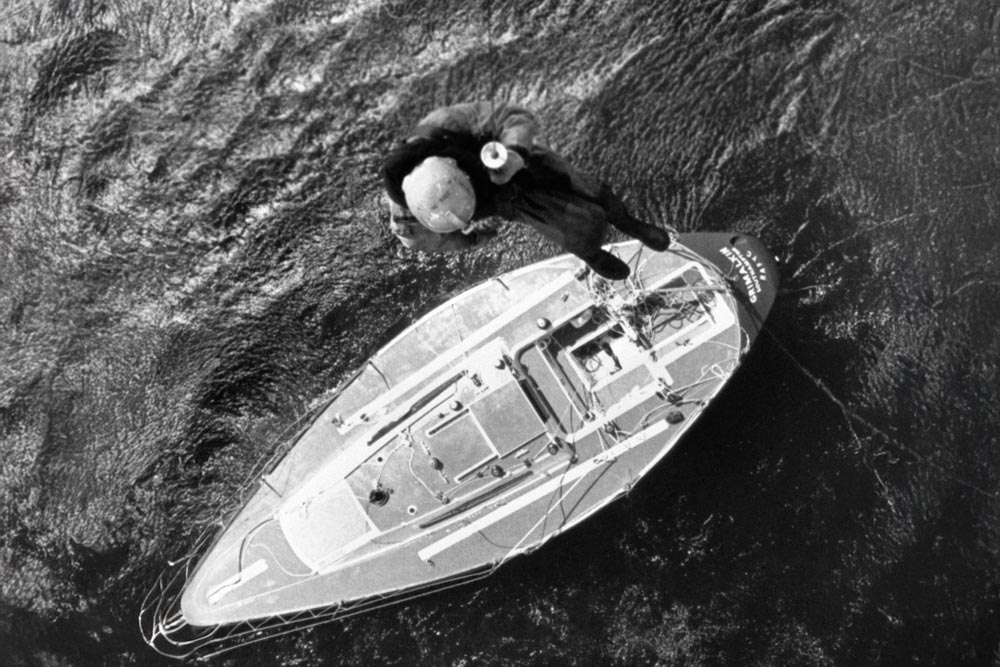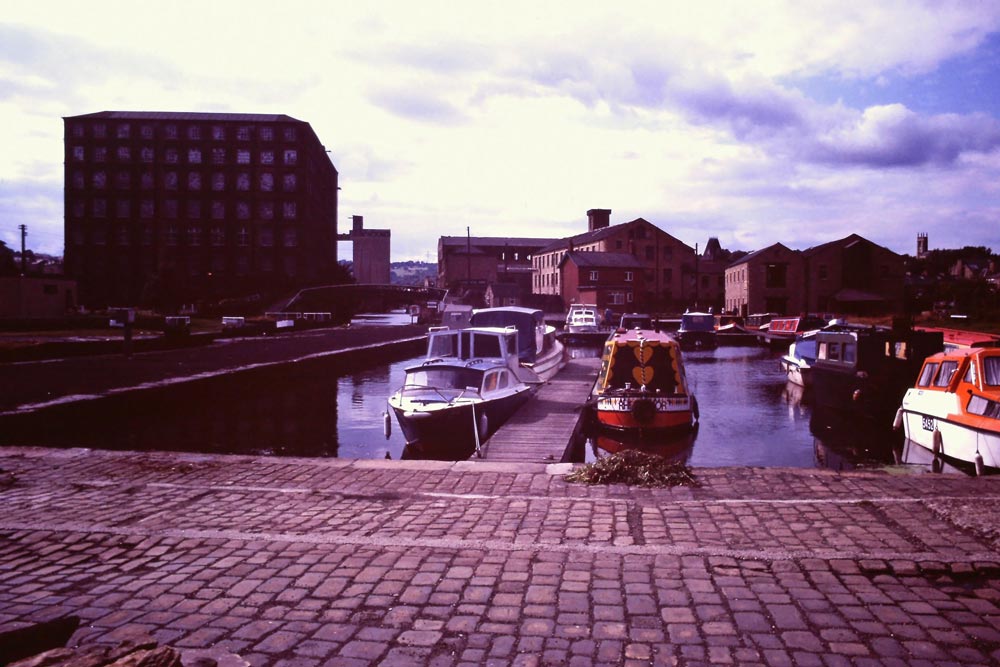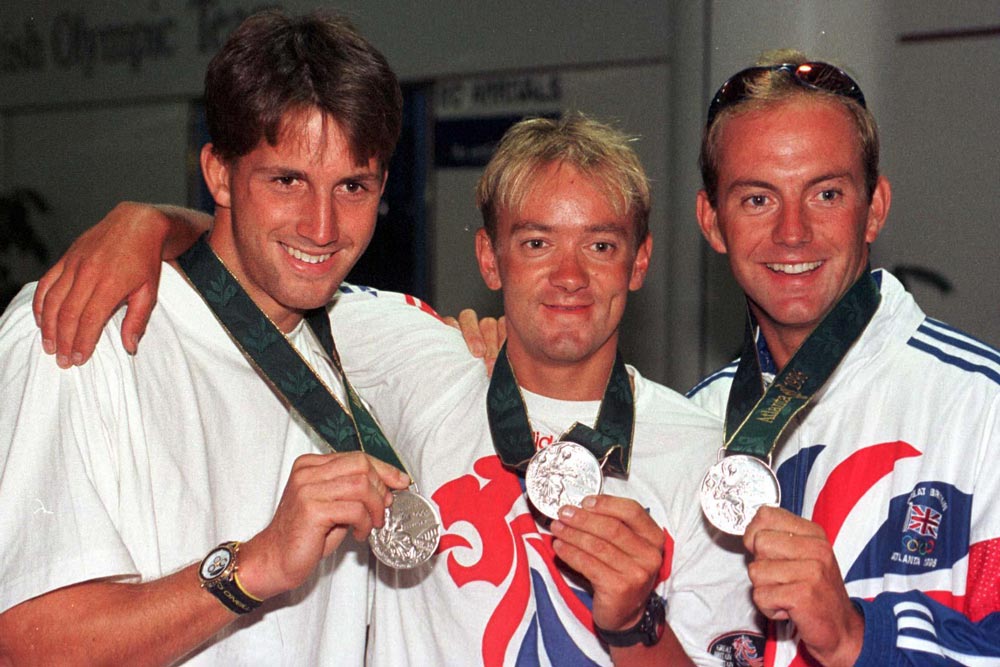1975 – 2000

Even as it was riding high on the success of the previous era, leisure boating was about to find that it would feel the squeeze from new and exciting global trends. At a time when sailing craft, from yachts to dinghies were becoming ever more complex, a small, simple one design dinghy from North America was sweeping away many of the UK’s established classes; the Laser phenomena was taking hold across the UK. The Laser did, however, feed into the UK’s existing club structure. The next big change, the arrival of the windsurfer, saw a significant migration away from organised events into a less structured, but more individual activity.
As the RYA raced to keep up with these societal changes, it faced the threat of growing competition on the international scene. In a perfectly forward thinking move, the RYA appointed Jim Saltonstall as the National Yacht Racing Coach, and it wouldn’t be long before Jim’s teachings brought a new focus and disciplined approach to sailing, both domestically and internationally.
The RYA was just coming to terms with the new forces active in sailing when they suddenly found themselves having to deal with a terrible tragedy in home waters. During the 28th iconic Fastnet Race the competing fleet of yachts were hit by a major storm whilst crossing the Irish Sea, with a number of well-found boats sunk, and 15 competitors lost. The ensuing rescue was the largest peacetime maritime rescue mounted in UK waters. and the RYA would take centre stage dealing with the global media interest and the inquiry that would follow.

A few years later, the RYA would also find itself in the firing line when the Association took the contentious move of joining other nations in boycotting the 1980 Olympics in response to Russia’s military intervention in Afghanistan, leaving a powerful team, with a number of strong medal prospects very disappointed.
There would be happier news in our coastal waters for the growing number of windsurfers - the world’s fastest growing sport – which would now be administered by the RYA. The following year, in 1983, the RYA would show their awareness of the growing commercialism in water sports when they also took on the organisation and running of the annual Dinghy Show in London, which was the biggest and best dinghy/multihull focused event in the world.
The RYA’s growing remit was further expanded with the launch of the RYA Motor Cruiser Scheme; was a key development given the growth in this form of leisure boating. Aided by the growth in marina’s and cruising, motorboats offered a ‘turnkey’ access to the water, with little in the way of any checking of competence, but the RYA approach, built on education rather than licencing, would set a foundation for safer powerboating moving forward.

Another aspect of the RYA’s growing management of all areas of boating would come when the RYA took over training and accreditation of the marine VHF system, an essential development as low-cost radio sets, both fixed and handheld, flooded into the market.
At the beginning of the 1990s the dinghy world would change again, as a new player arrived on the boat building scene, with Racing Sailboats producing a range of Single Manufacturer One Design dinghies that would soon become cornerstones of the RYA domestic programme. The 1996 Atlanta Olympics would be an unhappy one for British athletes, as Team GBR slipped to 36th in the medal table. One of the few high spots would be on the waters at Savannah when the RYA’s investment in Jim Saltonstall and his training would not only bring a medal dividend for this regatta, but would lay the foundations for a golden era of Olympic performances to come. The introduction of national lottery funding in 1997 helped revolutionise British racing, fuelling the future success of our Olympic teams. With icons such as Sir Ben Ainslie, Hannah Mills and Giles Scott leading the charge.

All this might be fine for the squads of finely honed sailors, or even just the happy weekend helms enjoying time afloat with their families, but increasingly questions were being asked about the accessibility to all areas of sport for the disabled. Thankfully, getting afloat, across almost every genre in boating, was something that could be opened up to all and again the RYA would be at the forefront of opening up access to the those with disabilities. Under the banner of the ‘Sailability’ programme, the RYA opened up all water-based activities, which was perfect timing given that sailing was about to become a Paralympics sport.
The talk now was of the looming new millennium, with the fears that the so-called ‘Millennium Bug’ would crash computers around the world. At home and abroad, the RYA would enter the new millennium a powerhouse at the heart of the world’s boating scene.
